
Nicaragua: Public Employees Hindered from Traveling to USA

PUBLICIDAD 1M
PUBLICIDAD 4D
PUBLICIDAD 5D
Allowing Cubans open entrance into Nicaragua has activated a new migratory route, one that could bring another wave of Cubans hoping to enter the USA
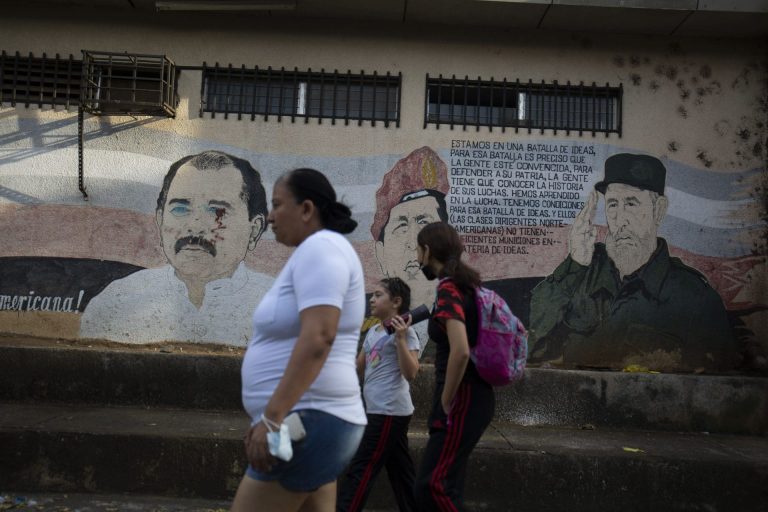
Allowing Cubans open entrance into Nicaragua has activated a new migratory route
Nearly two months since the announcement that Cubans entering Nicaragua would no longer need a visa, few have benefitted. Daniel Ortega’s decision fed the hopes of many who wish to leave the island, be it to settle on Nicaraguan soil or to take a shortcut towards the American dream of entering the United States.
The Sandinista leader just inaugurated his fourth consecutive presidential term, amid international isolation due to the lack of democratic legitimacy in the last election and the harsh repression exercised against his political opponents. The decision regarding Cubans’ right to enter, adopted on November 22, was a surprise move. It fed the suspicions of those who see in his open policy towards Cuba a way to help his colleague, Cuban president Miguel Diaz Canel, by providing an escape valve for the pressure cooker that Cuban citizens are living in.
Although the measure was made known two months ago, it wasn’t until January 12 that direct flights resumed between Cuba and Nicaragua, after being suspended for the pandemic. Following what has been an anguishing wait for many island residents, Aruba Airlines began covering the Havana-Managua route, although the frequency of flights is still unknown.
Up until now, only two airlines offered Cubans the possibility of traveling to Nicaragua: Panama-based Copa Airlines, that flies from Havana to Panama; and the Colombian airline Wingo, that flies from the Cuban capital to Bogota. This forced travelers to purchase a second ticket to complete their travel to Managua. According to Cuban activists, that situation raised the cost of the trip to approximately two thousand dollars.
Despite the high price, lines of Cubans could be seen every day in front of the Panamanian Embassy and the Colombian consulate in Havana, all seeking visas to travel to those countries, and from there fly on to Nicaragua. “They sell everything they have or ask their relatives outside the country for help paying the ticket,” Cuban activist Antonio Rodiles told reporters from Nicaragua Investiga and Conectas.
The dream of direct travel via the Venezuelan Conviasa service – which offers flights between Havana and Managua at a cost between five hundred and one thousand US dollars – has become a nightmare. Many Cubans are still holding tickets they bought before these flights were suspended due to the pandemic and have still been unable to travel.
Now Aruba Airlines, also a Venezuelan line, has begun covering that much-postponed route, and thousands of Cubans are waiting for a flight to fulfill “the Nicaraguan dream”. These headaches are just one aspect of the fallout from Ortega’s sudden decision to allow Cubans visa-free entry. Many analysts think that the Sandinista leader’s objective is to reward the Cuban government for the vaccine doses it donated to Nicaragua. Others attribute his move to a form of pressuring Washington with a weapon as cruel as it is unusual – the exodus of migrant caravans heading to the US Border.
In any case, the new Havana – Managua route will likely bring a new chapter in Central America’s ever more recurrent migrant crisis. A procession of Cubans is likely to seek a way to leave the island, in search of a paradise that doesn’t always receive them with open arms.
Antonio Rodiles believes that the unusual opening in Nicaragua’s immigration policies could stimulate a mass exodus, similar to the 1980 Marial crisis. At that time, the Cuban government allowed the mass emigration of over 100,000 Cubans to Miami. The circumstances this time are different, as it’s not a direct trip, but one that passes through Nicaragua.
“The principal objective is to provoke a massive exit of citizens, not just dissidents who are being thrown out or allowed to seek a third country. In the case of Nicaragua, there will be greater numbers, because the [Cuban] regime has turned this into a business. People leave, they go to the United States and establish themselves there, and soon they’re sending money back home to their relatives. This mechanism, in addition to lowering the internal pressure, is also a mode of subsistence for the Cuban regime itself,” assured the Havana-based analyst.
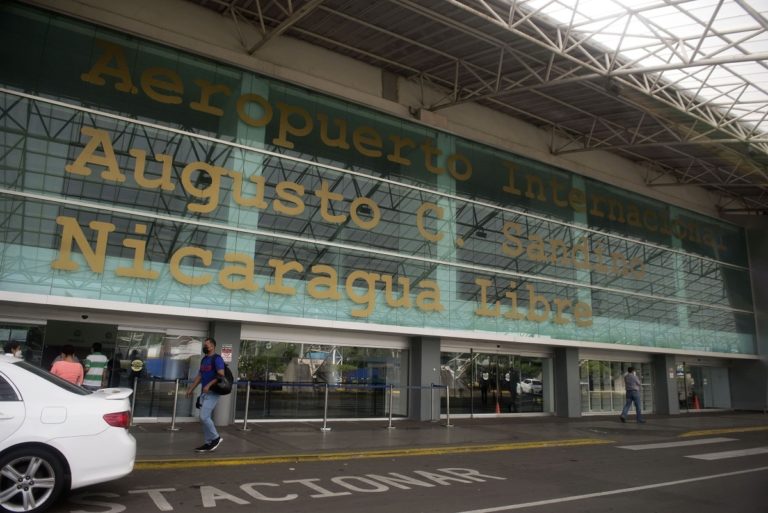
The Augusto C. Sandino Airport in Managua is the destination many Cubans are dreaming about today. Photo: Nicaragua Investiga.
Considering that Mexican president Andres Manuel Lopez Obrador also serves as an ally of Cuba – or at least doesn’t condemn their human rights abuses like most of the international community – Rodiles affirms that the dictatorship of Miguel Diaz Canel could facilitate the mobilization of hundreds of Cubans towards the southern border of the United States. This would only exacerbate the migration crisis brought about by the caravans. The purpose could be to later force negotiations with Washington that might lead to the suspension of the sanctions the US has imposed on the Cuban regime.
Rodiles even thinks that this complicity between Nicaragua and Cuba could be a response to President Joe Biden’s foreign policy. The latter didn’t renew the more open policies towards Cuba that Barack Obama initiated during his term in office. Also, Rodiles recalled, the immigration conflicts between Cuba and the United States have always occurred when the Democratic party was in power.
Claudia was one of those who bought a ticket in Cuba to travel to Nicaragua but has still been unable to make the trip due to Conviasa’s suspension of flights. Her goal: to leave the island and try living in a country that offers a better quality of life. As she told journalists preparing this article, she plans to take advantage of the Ortega regime’s open visa policy that was begun in November. However, her aspirations don’t end there: she wants to work in Nicaragua, even for a brief period, to be able to send money home to her family. “I have a little boy,” she reveals, “I can’t leave him without help.”
With a job in her new Nicaraguan destination, she could maintain her family, which is currently at the mercy of Cuba’s harsh reality. “[Nicaragua] is a very pretty country,” she says, after listening to the comments of other Cubans who traveled to Nicaragua before the current measures were established.
Claudia lives in Camaguey, a city in the center of Cuba’s eastern region. She’s one among many other Cubans who’ve set their sights on Nicaragua. Like nearly all of them, she’s fearful of offering a lot of detail regarding her expectations for the trip and is reserved while conversing about the topic.
Nicaragua isn’t a new destination for Cubans. Many have taken up residence there as part of the Cuban diaspora of the past years. Many choose to remain silent about their motives for leaving the island; however, most recognize that their principal objective is entering the United States. That’s complicated, because the majority don’t have the necessary resources for such a trip. “Many people are using this route and risking their lives to cross, but that’s not my intention,” Claudia notes in justifying her decision to fly to Nicaragua.
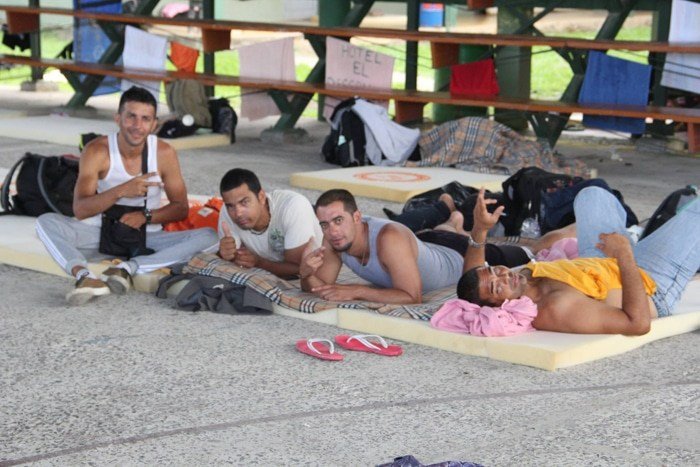
For many Cubans, Nicaragua is a “bridge” towards their American Dream. Photo: Office of the Presidency.
For several days, journalists from Nicaragua Investiga and CONNECTAS contacted Cubans in Havana and others in Nicaragua. The majority preferred not to give declarations to the press, for fear of reprisals from the Diaz Canel or the Ortega governments. One of them affirmed with certain concern: “Anyone who talks to you is crazy.”
Nonetheless, since the end of November, more than a few Cubans have been manifesting on social media their intentions of going to Managua as part of a long voyage that could take them to the United States via their border with Mexico.
A Cuban citizen residing in Nicaragua commented that shortly after Ortega’s open travel policy became known, he began receiving calls. People he knew in Cuba asked him: “How are things there in Nicaragua, be it for staying, for coming to buy things, or for continuing straight on” to the US.
He added a common perception: “Nicaragua is going to become an escape valve for the pressure cooker [within Cuba].” He noted that disinformation and speculation permeate the atmosphere surrounding this decision. “I tell them they should head north, because it’s very difficult to find work here,” he advises.
“The Cubans who come here want move on immediately; they don’t want to wait even two days, because they know that this is an escape hatch that could close at any moment.” So states a Cuban citizen who’s been living in Nicaragua for some time. He shares an immediate goal with other island natives temporarily residing in Nicaragua: to achieve a better quality of life by fleeing the Cuban dictatorship that Miguel Diaz-Canel heads today. “That [regime] is suffocating us, and we need to be free,” another interview subject, who didn’t want to be named, stated brusquely.
“Emigration has always served as a way of alleviating the internal pressure [in Cuba]”, noted Laritza Diversent, attorney, director, and founder of the Cubalex center for legal assistance. Her organization defends Cubans’ human rights and advocates for legal reform on the island. Diversent feels that after the July 11, 2021 protests in Cuba – when hundreds of dissenters were arrested and around sixty have already been tried – “the government needs to relieve the internal pressure that exists.”
“It’s highly concerning that the Cuban people, whose difficulties are very similar to those in Nicaragua, see themselves as forced to leave Cuba to seek economic help and protection from the repression,” stated Haydee Castillo, a human rights defender and representative of the organization Nicaraguenses en el mundo [“Nicaraguans in the world”].
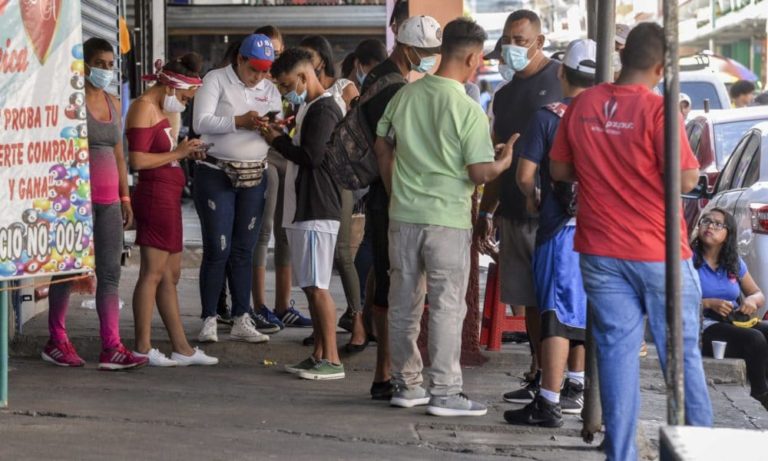
The American dream of many Cubans got new life with the resumption of direct flights from Havana to Managua. Photo: La Prensa
Laritza Diversent cited a fact that gives context to this new route for Cuban emigration: due to the migration accords they’ve signed with the United States, the Cuban government “can’t open their borders the way they did during the 1980 Mariel exodus.”
For Castillo, though, “Nicaragua at this time has nothing to offer any country, much less for tourism, because it’s in a de facto state of siege, where human rights are violated at every moment, and where no one has any guarantees of their physical integrity and personal security.”
Castillo lamented that a humanitarian and human rights problem, “would be used by the Ortega-Murillo regime as a vehicle for pressuring the US authorities.” She agreed with those who believe that it’s all a tactic to trigger an immigration crisis for the United States. Legislators from the US warned as much in a press conference at the beginning of December. “Ortega wants to create chaos on the border,” representative Maria Elvira Salazar declared. Her colleague, Cuban-American Senator Marco Rubio, warned that Diaz-Canel “will utilize mass migration as a weapon, following the historic protests of July 11.”
“The Ortega-Murillo regime is helping the Cuban dictatorship by eliminating visa requirements, in order to spark a mass migration towards our southern border,” added Senator Rubio. He advocated for the Biden administration to “respond quickly and take this for what it is: “a hostile act”.
Despite these suspicions, there’s no evidence that Ortega’s decision was aimed at striking a blow to the US with an immigration crisis on its border. Others – like Nicaraguan attorney and journalist Hector Mairena – prefer to see the Nicaraguan government’s decision as part of a pattern of “collaboration” disguised as humanitarian aid, but always with a hidden agenda. This has been seen in both directions, thanks to a shared “ideological identity”. “The intentions behind this [the visa exemption] aren’t good. Cuba is experiencing a crisis that’s not only economic, but also political, because there’s a growing active opposition.”
Mairena explained that this cooperation with Cuba, “above all allows them to ease economic operations. An old and well-known matter.” He added: “Cuba and Nicaragua have close relations. Among other things, Nicaragua allows Cuba to supply itself via triangular economic operations.”
Although, “Cuba has made a practice of sending medical and teachers’ brigades” to Nicaragua, Mairena notes that this help isn’t free. “Although [on-the-ground personnel] continue receiving miserable salaries, [Cuba] charges stratospheric amounts to the countries receiving that “assistance”.
Hector Mairena thinks that “things were different” in the past, most likely, but for some time Cuba has made a business out of the humanitarianism that their defenders and allies so emphasize in the now consolidated bloc of XXIst century “socialist” countries, that includes Venezuela, Bolivia and a handful of small island nations. These form the Bolivarian Alliance for the Peoples of Our America (ALBA), a regional organization founded in 2004 by Fidel Castro and then-president of Venezuela Hugo Chavez, both strong allies of Daniel Ortega. The latter brought Nicaragua into the alliance just one day after the election that returned him to power in January of 2007, now 15 years ago.
“Groups of Cubans trying to migrate have always suffered from restrictions imposed by the countries of the region,” noted Laritza Diversent. She recalled that in 2015 Nicaragua closed its borders to prevent a large group of Cubans from crossing through its territory. That move sparked a migrant crisis for Costa Rica.
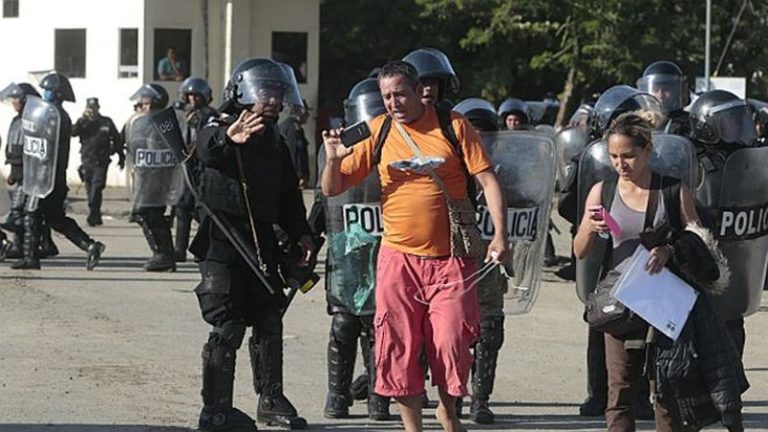
In 2015, Ortega moved in a direction totally opposite from the current one, closing the borders to Cuban migrants, and even employing repressive tactics. Photo: EFE
That year, the Cubans met an earlier version of Ortega, who used force and repression to block the passage of thousands of migrants from the island. The migrants, including children and pregnant women, were undertaking a long voyage to the United States. Ortega’s decision left the group stranded in Costa Rica, under conditions of extreme vulnerability.
Ortega not only blocked their passage, but also mobilized a large infantry battalion of the Nicaraguan Army to the country’s southern border, along with special police forces. At least two thousand Cubans, in desperation, had to enter Costa Rica via the Peñas Blancas border post.
Under the administration of Costa Rican president Luis Guillermo Solis, that country then allowed them to stay in shelters, schools and churches. Despite this, Rosario Murillo, the official spokesperson for the Sandinista regime, named Costa Rica as the “responsible” party, absolving Nicaragua from any role as the “cause” of the migratory crisis. “We hold the Costa Rican government responsible for unleashing a humanitarian crisis of serious consequence for our region,” Murillo told the official media at that time.
Before the 2018 social uprising, Nicaragua offered Cubans visas that authorized a single entry for thirty dollars. They also offered transit visas, to remain for a period of five days. After the insurrection of 2018, though, everything changed, and local tourism collapsed.
Ortega went from repressor to “solidarity” with Cubans in 2019, one year after those protests, with the allowance of open visas for Cubans engaged in business tourism. This move was a strategy to reactivate local tourism, because there was no more interest from other foreigners.
Groups of Cubans began to be seen in Nicaraguan markets buying up every type of product, which they would later take back to resell on the island. That year, there were more than six scheduled flights per week between Havana and Managua, on two Venezuelan airlines. In March 2020, with the arrival of the COVID-19 pandemic on the island, the flights were suspended.
“After [the 2015 border closure] and the related military repression, there’ve been two attempts at what we here call “lowering the pressure in the pot” – the 2019 measures, and now this, indicated Hector Mairena. He highlighted what he sees as the Ortega government’s intention to extend help to his Cuban ally, by relieving him of many of the citizens who not long ago went out on the streets of Havana and other Cuban cities to demand an end to the communist dictatorship, that’s now been in power for more than sixty years.
Following confirmation of the first flight on the new Havana-Managua migration route, it will soon become clearer if these flights decrease the social pressure in Cuba, as cogs in a geopolitical strategy worked out between the Sandinista forces and the Cuban government. Or whether the suspicions of many others prove true, who see Ortega’s objective as an intent to create a new migration crisis at the doorway of his hated “empire”, today governed by Joe Biden.
This article was originally published in Spanish in Confidencial and translated by Havana Times
Archivado como:
PUBLICIDAD 3M
PUBLICIDAD 3D